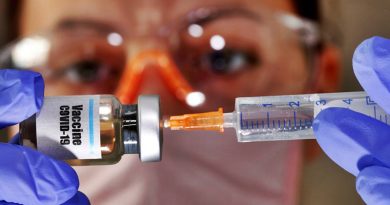Reducing the Impact of MS Relapses
[ad_1]
By
Sharon Stoll, DO, as told to Keri Wiginton
You can think about multiple sclerosis (MS) kind of like the coronavirus: It’s completely unpredictable. None of us — not the doctor or the person with the disease — has a crystal ball. We have no idea how MS will affect you 20 years down the road.
That’s why, if you have a relapsing form of MS, the most important thing is early treatment with an effective disease-modifying therapy (DMT).
You should start or stay on a DMT even if you think you’re doing fine. Some people want to go the natural route if they only have a relapse here or there. But no amount of exercise, vitamin D, or sun exposure is going to curtail your disease path. The only thing that’s proven to do that is disease-modifying therapy.
We also know that the brain of someone with MS shrinks at a faster rate than it would for somebody matched in age, gender, and lifestyle. DMTs are critical in slowing that process, especially when the disease is in its early stages.
Finding the Right Treatment
There are lots of DMTs out there. Some work better than others. But I explain the pros and cons of each medication with anyone starting a new treatment.
Many oral drugs are about 50% effective. That doesn’t mean that half of all people who use them will relapse. It means that if you were normally to have a relapse every 5 years, you would instead have a relapse every 10 years.
People relapse less often now because we’re able to catch and treat MS earlier. But having said that, I see plenty of people who come in with 10 enhancing lesions in their brain. I’m not going to put them on a medication that’s only 50% effective. I’m going to put them on something that’s 95% effective.
You may wonder why everyone isn’t on the most effective choice. Well, one can make a case that the better a drug works, the more side effects it may have. But that’s not exactly true.
Continued
For example, natalizumab, a drug that suppresses your immune system, is one of the most effective medications we have for relapsing forms of MS. You get it through a vein in your arm every 4 weeks. I’ve never seen someone have a relapse on it. And it doesn’t have daily side effects.
But it does come with a serious warning.
If you take natalizumab and you have antibodies against the antibody for the JC virus, it raises the chances you’ll get a rare brain infection that might kill you. It’s called progressive multifocal leukoencephalopathy (PML).
That sounds scary, right? But it’s standard for doctors to check for these antibodies every 6 months. And if you’re negative, it’s safe to continue the medication.
That’s why I think it’s important to see a specialist, even if it’s just once a year or at the onset of your diagnosis. They’ll let you know how to safely take the best drug for your MS. And you can decide what’s right for you.
When to Switch Drugs
If you have a relapse, you’ll want to talk to your doctor about finding a new medicine. But it’s important to know the difference between a true relapse and a flare of an old lesion.
A relapse usually shows up as symptoms you’ve never had before. That’s things like new vision loss, balance problems, and numbness or tingling on one side of your body. These symptoms will linger longer than a day.
A flare is when old symptoms get worse. That’s more likely to happen in certain situations, like when you’re stressed out or hot.
But it can be hard to tell the difference. It’s a good idea to call your doctor if you aren’t sure and your symptoms last more than 24 hours.
What to Know About Steroids
I get lots of calls during the holidays. That’s when people have flares and they think they need steroids. I don’t treat a worsening of old symptoms with steroids because I know their symptoms are caused by stress.
If you have a relapse, you may get 3-5 days of steroids through a vein in your arm. But you don’t always need treatment. Steroids don’t change the course of your disease or prevent flares in the future. They only make your symptoms go away faster. That means instead of waiting a year to get 90% better on your own, steroids will help you hit that mark in 6 weeks.
Continued
How to Manage Flares
Meditation, yoga, or acupuncture are my top choices.
For yoga, I suggest the same program I do with my kids. It’s called “Betsy the Banana: A Cosmic Kids Yoga Adventure!” You can find it for free on the internet. It provides the perfect amount of stretching for people with MS. And you don’t have to twist into weird positions.
Virtual Visits
Telehealth is a good way to meet a doctor before you come in for their first exam, especially if you have to drive a long way to see them. They can tell you what lab or imaging tests you need. And then you can talk about the results when you come into the office.
Another cool thing about technology is that certain apps can detect subtle changes in someone’s motor functions. I use one I helped create. It’s called BeCare Link. It can do a neurological exam using a smartphone — all from the comfort of someone’s home.
For example, if someone tells me they’re falling more or their walking is off, the first thing I’ll check is how fast they can do a 25-foot walk. The app can use built-in phone sensors to gather that data. And smartphones can give more nuanced data points than I can do in the office. The phone can count someone’s steps or gauge whether they veer to the right or left.
And then I can make an assessment via telehealth when I get their score and their metrics.
But telehealth can’t evaluate a new symptom. You might have brand new left leg numbness. That could be a relapse. But people with MS aren’t spared from the other ailments we all get. You could have a herniated disk, a pinched nerve, or sciatica. That’s when you to come into your doctor’s office.
Be Specific About Your Symptoms
For MS, there are three things we image: the brain, the cervical spine, and the thoracic spine. An MRI will show right away if you’ve had a relapse in these areas. But before your scan, you’ll need to tell your doctor where your new symptoms are. That can change the area they scan.
Take the optic nerve, for example. That’s one slice, or picture, of the brain. If you miss it, the MRI is worthless. If you have brand new double vision, tell your doctor that, even if you’re already scheduled for a routine MRI. That way they can write specific directions to image that area.
Continued
When to See Your Doctor
I want to see you every 3 months if your condition isn’t stable.
But if you’re under 65 and your condition is stable, you should see your doctor every 6 months. If you’re over 65, your condition is stable, and you haven’t changed drugs in 5 years, then once a year is generally OK. That’s because MS tends to be less active as you get older.
I image my patients’ brains every year, even if they don’t have new symptoms. That’s so I can find their asymptomatic lesions. One new lesion isn’t the end of the world. But for every lesion that gives you symptoms, you could have 9 that don’t.
When I catch new “silent” lesions, I may need to change you to a more effective medicine. I want to get ahead of the disease instead of playing catch-up.
My motto is the same as Benjamin Franklin’s: An ounce of prevention is worth a pound of cure.
Sharon Stoll, DO, is a neurologist at Yale Medicine. Stoll specializes in multiple sclerosis and neuroimmunology — neuroscience and the immune system. Her current research focuses on relapsing-remitting and progressive forms of MS.
[ad_2]
Source link




